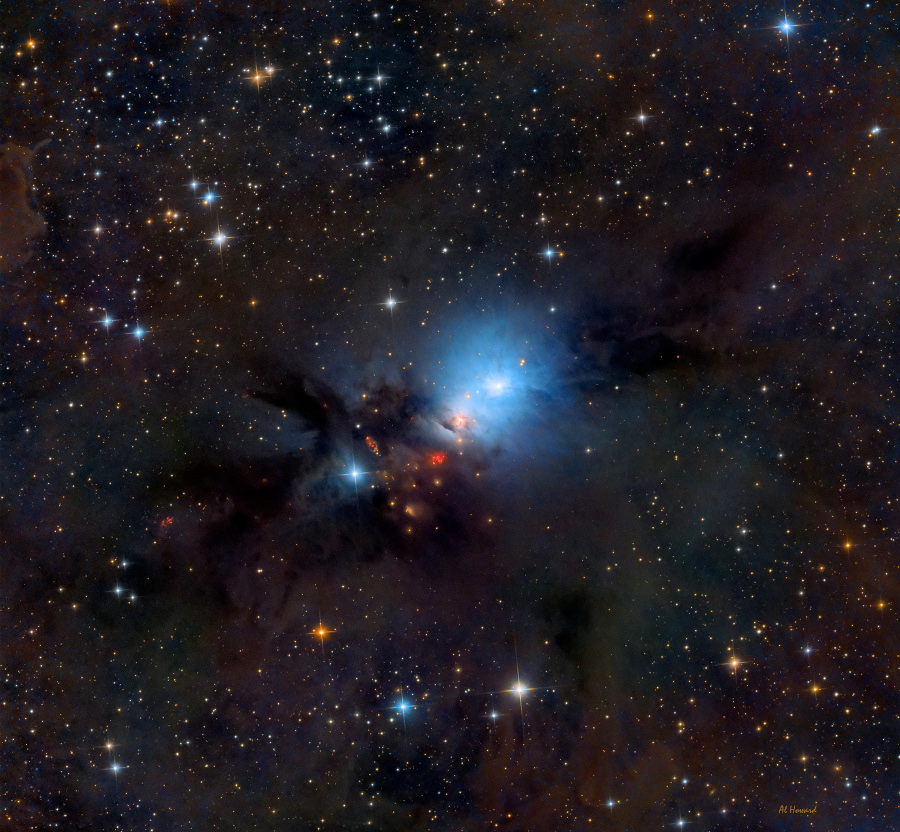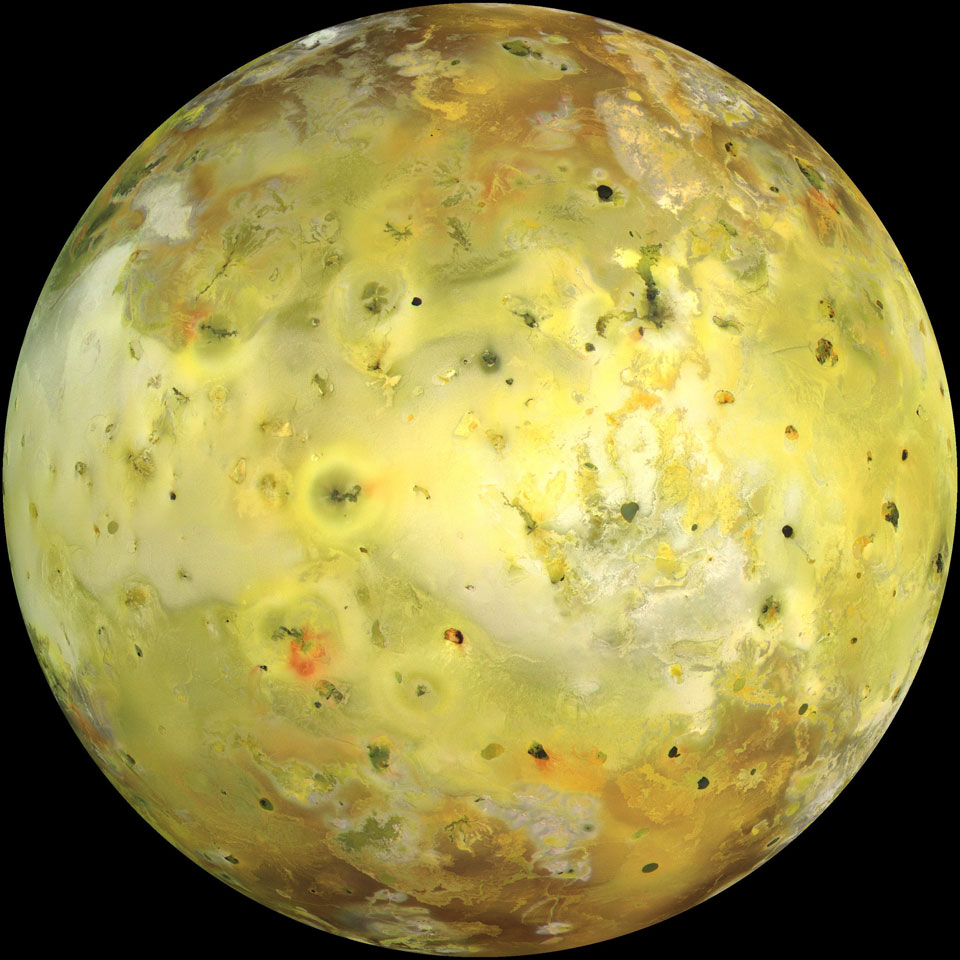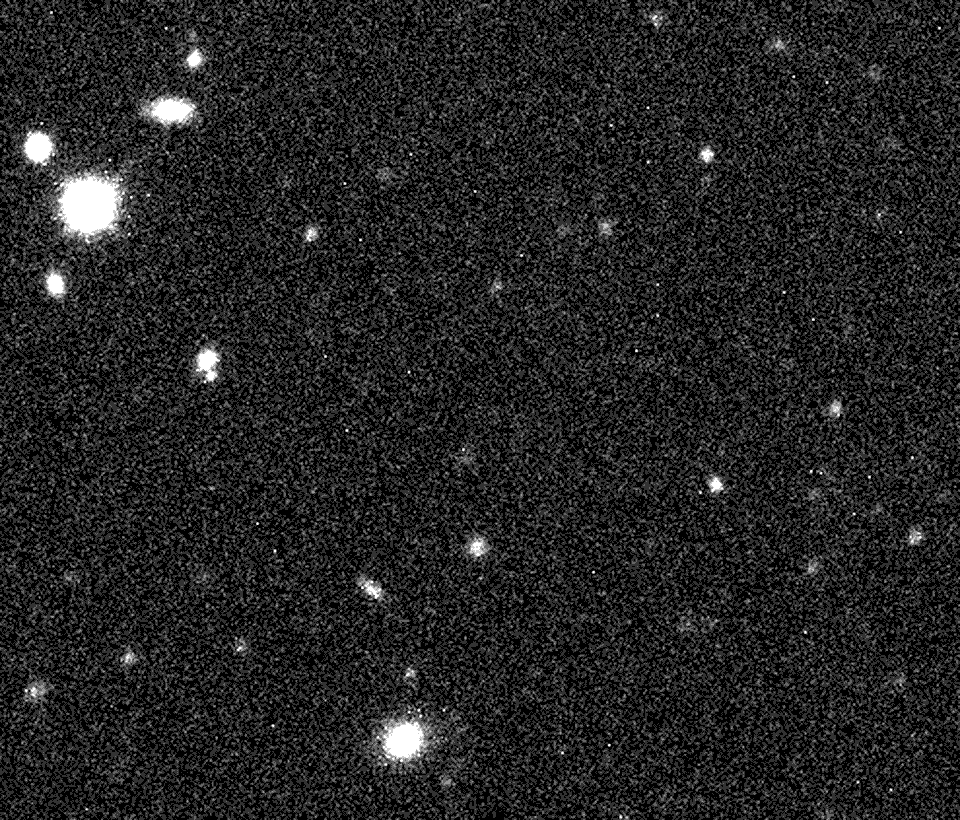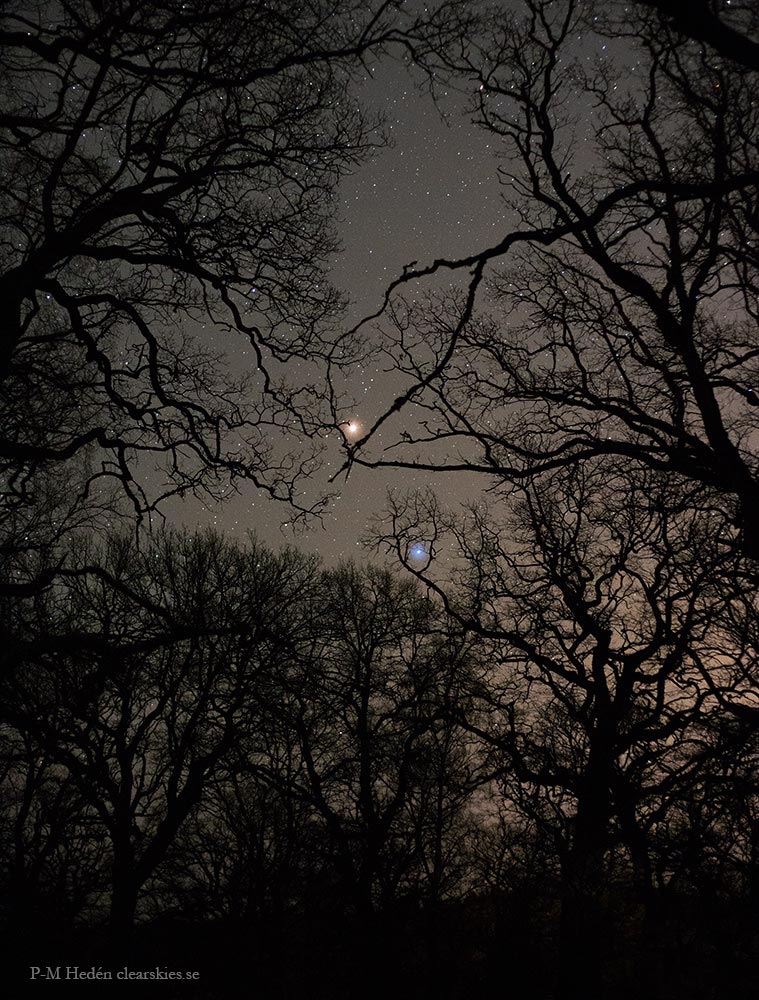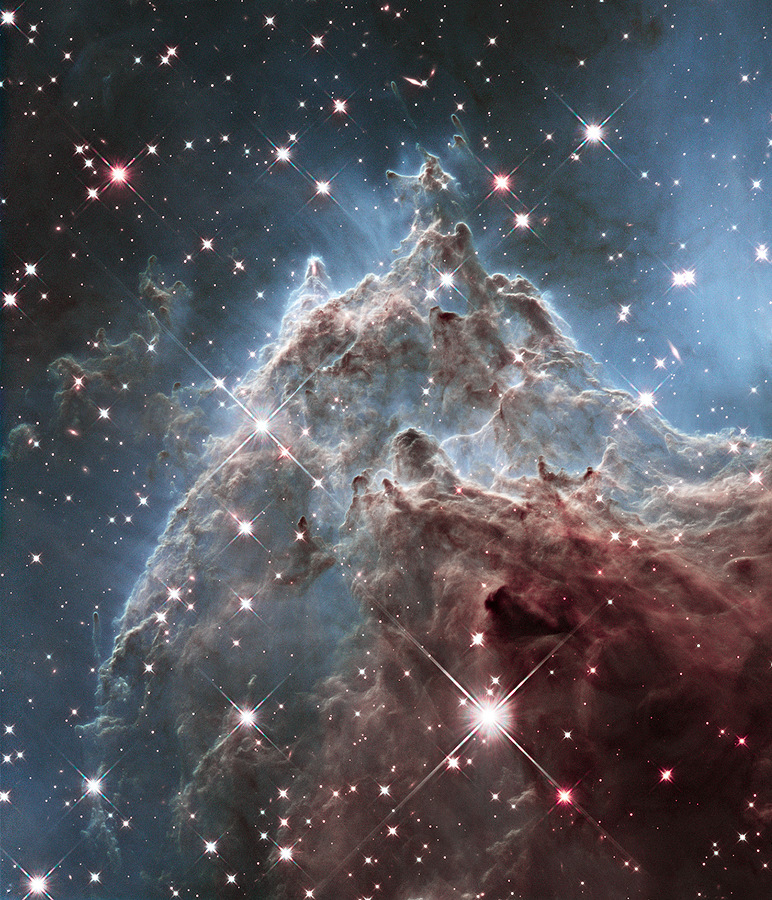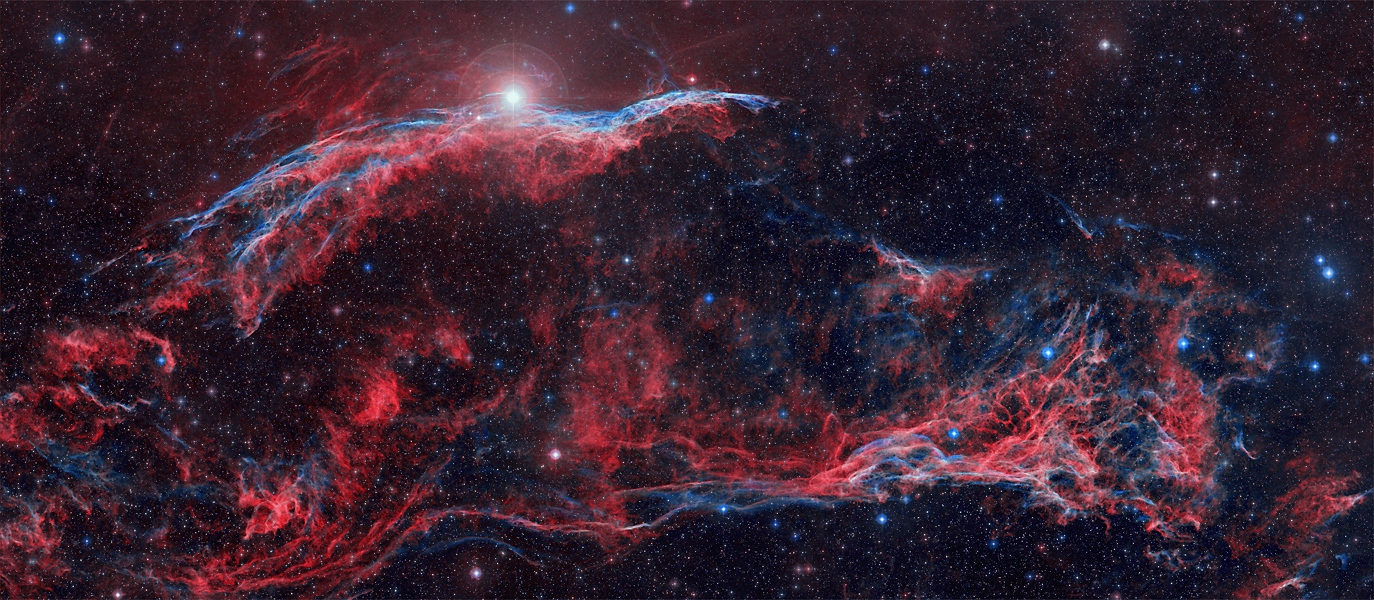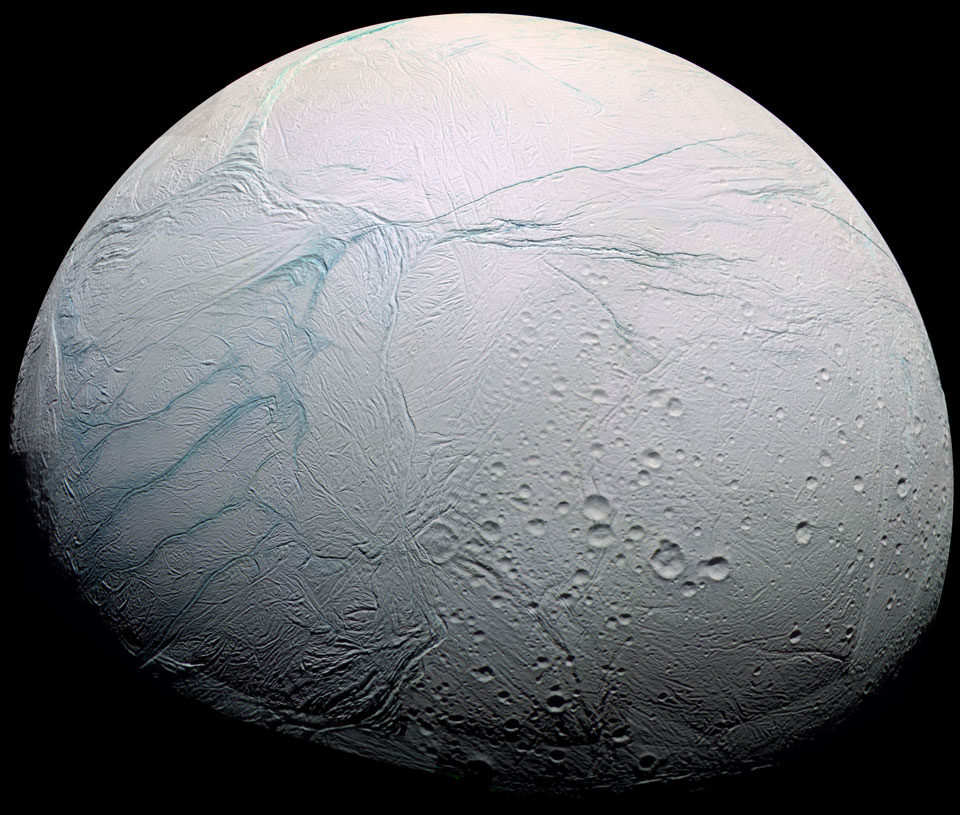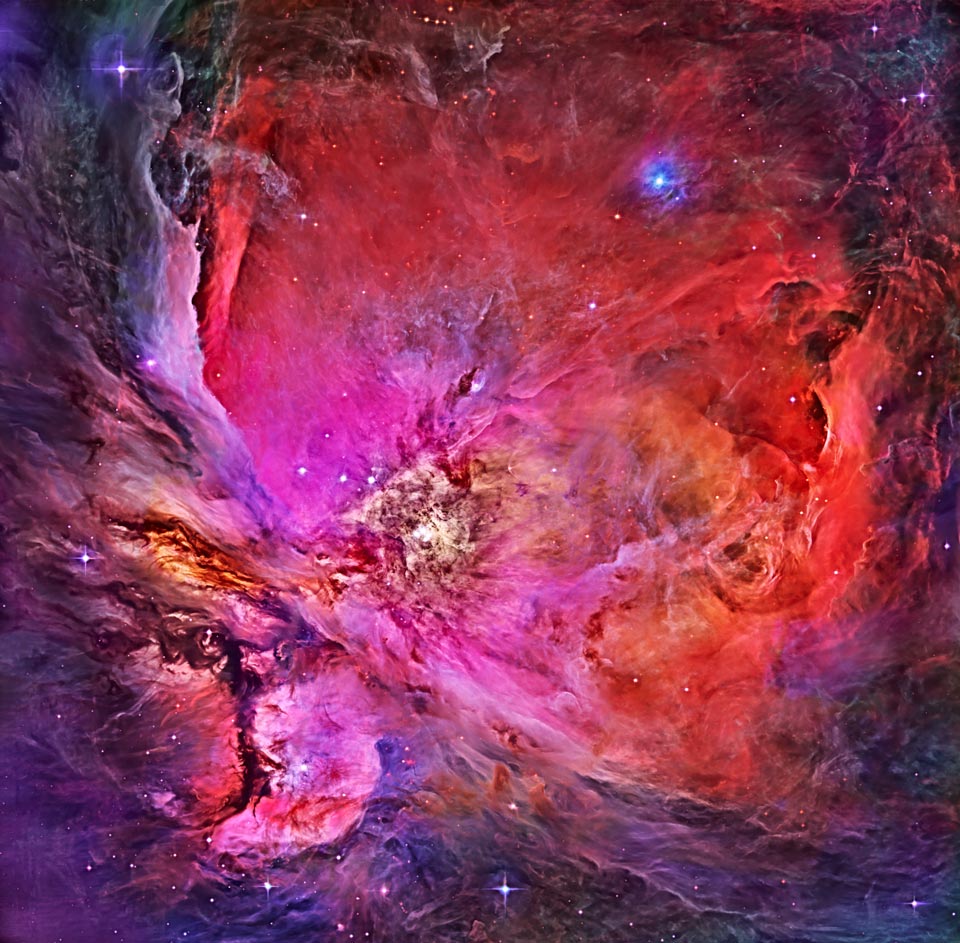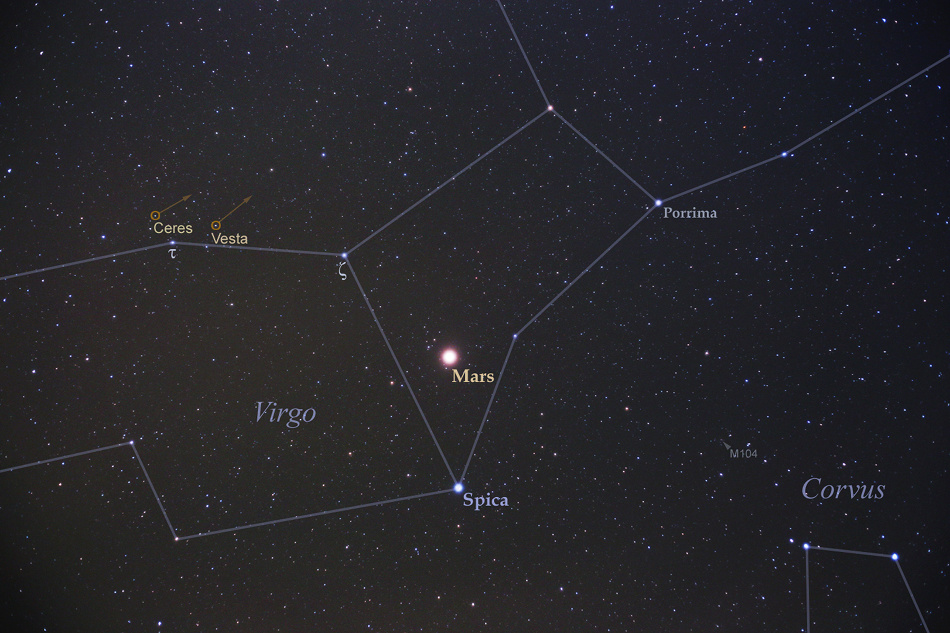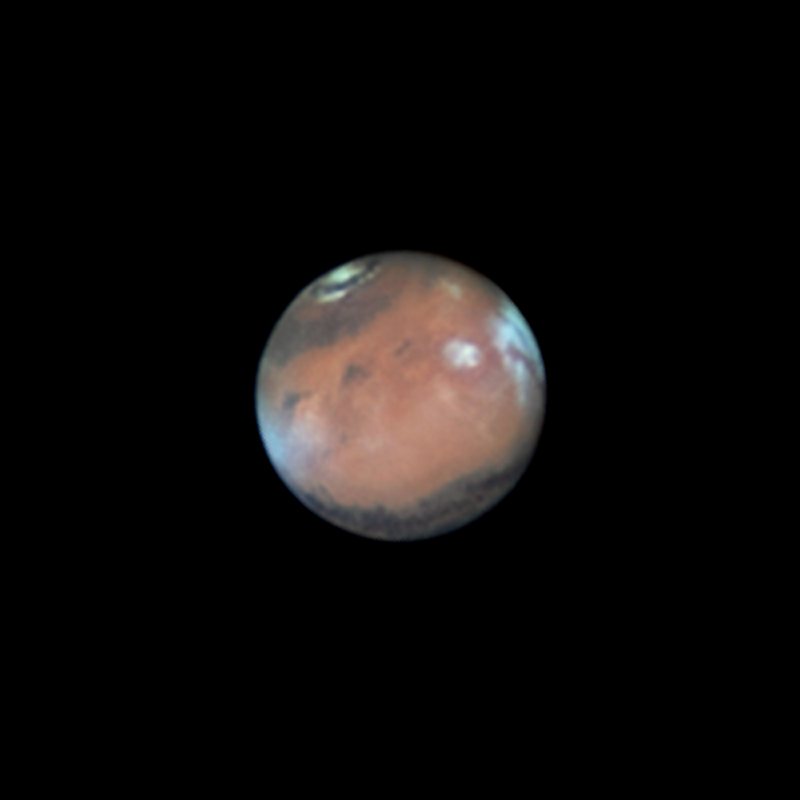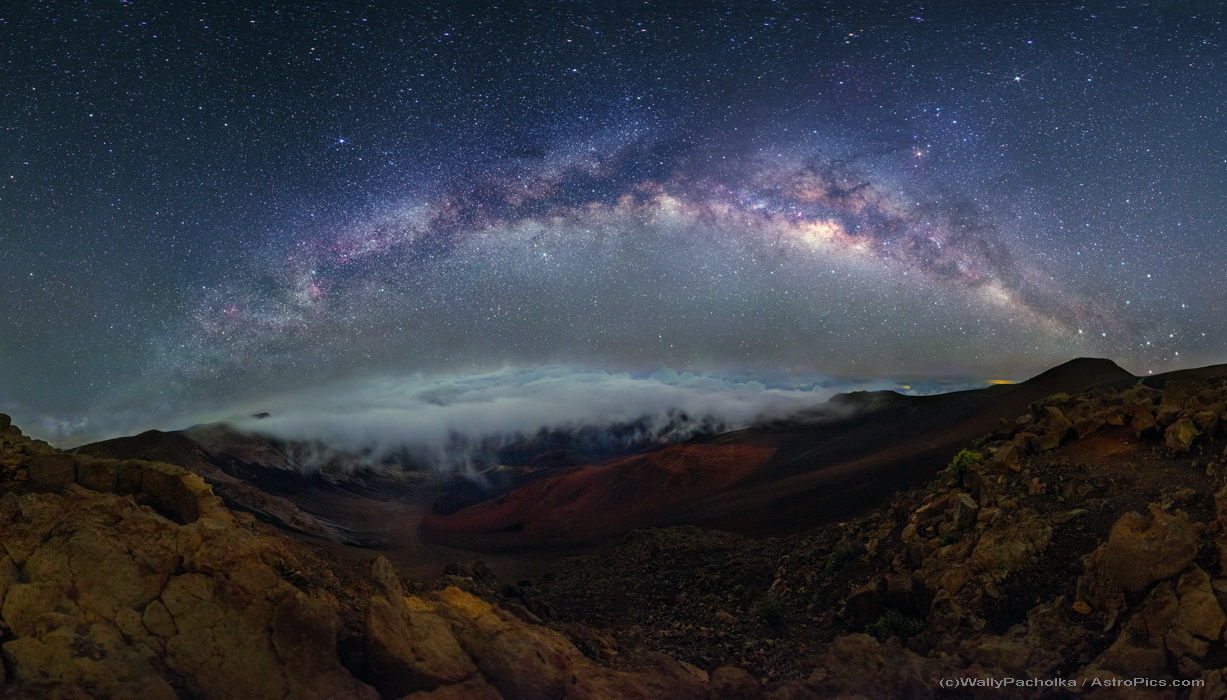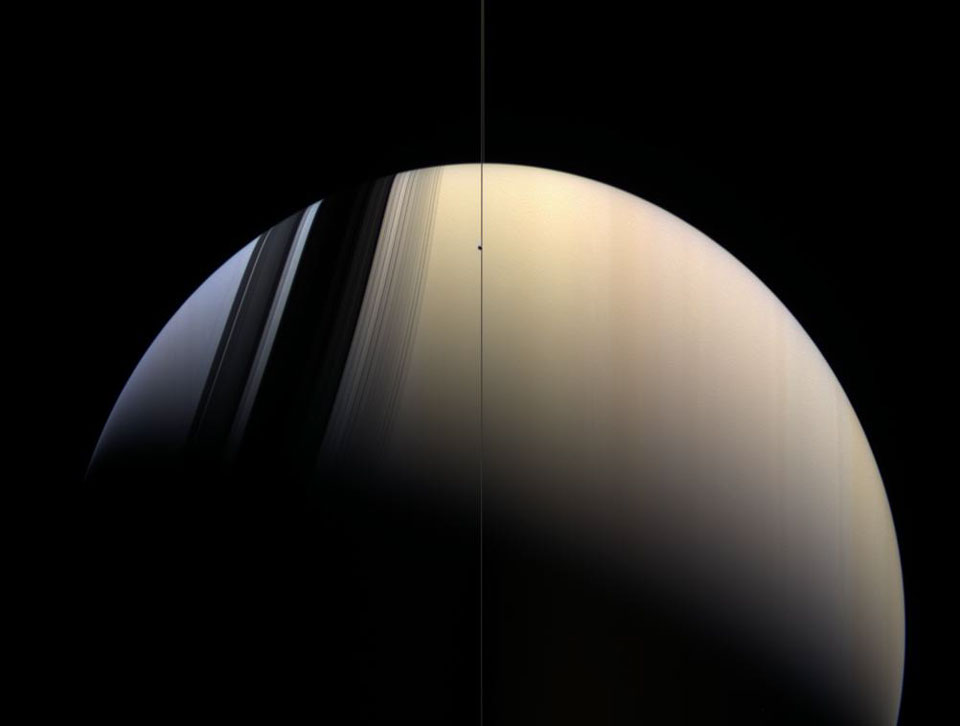
|
| Title: Astronomy Picture of the Day | |
| friendsoffortiesfive > General > General Discussion | Go to subcategory: |
| Author | Content |
|
Niceguy2
|
|
|
Date Posted:03/06/2014 11:29 PMCopy HTML I really love this site and |
|
|
ravch641943
|
#51 |
|
Re:Astronomy Picture of the Day Date Posted:03/30/2014 2:31 PMCopy HTML Those photos all look good.
Thanks |
|
|
Niceguy2
|
#52 |
|
Re:Astronomy Picture of the Day Date Posted:03/30/2014 7:52 PMCopy HTML Image Credit: Galileo Project, JPL, NASA Explanation: The strangest moon in the Solar System is bright yellow. This picture, an attempt to show how Io would appear in the "true colors" perceptible to the average human eye, was taken in 1999 July by the Galileo spacecraft that orbited Jupiter from 1995 to 2003. Io's colors derive from sulfur and molten silicate rock. The unusual surface of Io is kept very young by its system of active volcanoes. The intense tidal gravity of Jupiter stretches Io and damps wobbles caused by Jupiter's other Galilean moons. The resulting friction greatly heats Io's interior, causing molten rock to explode through the surface. Io's volcanoes are so active that they are effectively turning the whole moon inside out. Some of Io's volcanic lava is so hot it glows in the dark. |
|
|
tamarafromTX
|
#53 |
|
Re:Astronomy Picture of the Day Date Posted:03/31/2014 1:59 AMCopy HTML  |
|
|
ravch641943
|
#54 |
|
Re:Astronomy Picture of the Day Date Posted:03/31/2014 2:14 PMCopy HTML What a Moon.
|
|
|
Janner_Baker
|
#55 |
|
Re:Astronomy Picture of the Day Date Posted:03/31/2014 8:20 PMCopy HTML   |
|
|
Niceguy2
|
#56 |
|
Re:Astronomy Picture of the Day Date Posted:03/31/2014 10:36 PMCopy HTML Image Credit: S. S. Sheppard (CIS) & C. Trujillo (Gemini Obs.), NOAO Explanation: What object has the furthest known orbit in our Solar System? In terms of how close it will ever get to the Sun, the new answer is 2012 VP113, an object currently over twice the distance ofPluto from the Sun. Pictured above is a series of discovery images taken with the Dark Energy Camera attached to the NOAO's Blanco 4-meter Telescope in Chile in 2012 and released last week. The distant object, seen moving on the lower right, is thought to be a dwarf planet like Pluto. Previously, the furthest known dwarf planet was Sedna, discovered in 2003. Given how little of the sky was searched, it is likely that as many as 1,000 more objects like 2012 VP113 exist in the outer Solar System. 2012 VP113 is currently near its closest approach to the Sun, in about 2,000 years it will be over five times further. Some scientists hypothesize that the reason why objects like Sedna and 2012 VP113 have their present orbits is because they were gravitationally scattered there by a much larger object -- possibly a very distant undiscovered planet. |
|
|
tamarafromTX
|
#57 |
|
Re:Astronomy Picture of the Day Date Posted:03/31/2014 11:36 PMCopy HTML  |
|
|
Niceguy2
|
#58 |
|
Re:Astronomy Picture of the Day Date Posted:04/01/2014 9:23 PMCopy HTML Image Credit: Expedition 38 Crew, International Space Station, NASA Explanation: Space station robot AFJ013 has forgotten her space lock key again. The frustrated robot was reduced to tapping on a space station window and asking for a human to let her back in -- for the third time this week. "Yes, she did a great job adjusting the tolerances on the new science module, but why she can't remember to take her key is beyond me," said incredulous station commander Koichi Wakata (Japan). "We would keep the entry unlocked but we are afraid that space aliens will come in and raid our refrigerator", the astronaut lamented. Happy April Fools' Day from the folks at APOD. In reality, International Space Station astronaut Wakata poses in front of a Cupola window while the Latching End Effector, attached to Canadarm2, is visible just outside. |
|
|
tamarafromTX
|
#59 |
|
Re:Astronomy Picture of the Day Date Posted:04/02/2014 2:54 AMCopy HTML  |
|
|
Niceguy2
|
#60 |
|
Re:Astronomy Picture of the Day Date Posted:04/02/2014 8:41 PMCopy HTML Image Credit & Copyright: P-M Hedén (Clear Skies, TWAN) Explanation: A bright pair of sky objects will be visible together during the next few months. Mars will shine brightly in its familiar rusty hue as it reaches its brightest of 2014 next week. The reason that Marsappears so bright is that Earth and Mars are close to each other in their long orbits around the Sun. Spica, on the other hand, shines constantly as one of the brightest blue stars in the night sky. Pronounced"spy-kah", the blue-hued star has been visible throughout human history and the sounds that identify it today date back to ancient times. Pictured above, the planet and the star were photographed rising together toward the southeast after sunset last week through old oak trees in Sweden. |
|
|
Janner_Baker
|
#61 |
|
Re:Astronomy Picture of the Day Date Posted:04/03/2014 9:24 PMCopy HTML   |
|
|
Niceguy2
|
#62 |
|
Re:Astronomy Picture of the Day Date Posted:04/03/2014 9:47 PMCopy HTML Image Credit: NASA, ESA, Hubble Heritage Team (STScI/AURA) Explanation: This fantastic skyscape lies near the edge of NGC 2174 a star forming region about 6,400 light-years away in the nebula-rich constellation of Orion. It follows mountainous clouds of gas and dust carved by winds and radiation from the region's newborn stars, now found scattered in open star clusters embedded around the center of NGC 2174, off the top of the frame. Though star formation continues within these dusty cosmic clouds they will likely be dispersed by the energetic newborn stars within a few million years. Recorded at infrared wavelengths by the Hubble Space Telescope, theinterstellar scene spans about 6 light-years. The image celebrates the upcoming 24th anniversary of Hubble's launch onboard the space shuttle orbiter Discovery on April 24, 1990. |
|
|
Niceguy2
|
#63 |
|
Re:Astronomy Picture of the Day Date Posted:04/04/2014 8:14 PMCopy HTML Image Processing: Oliver Czernetz - Data: Digitized Sky Survey (POSS-II) Explanation: Delicate in appearance, these filaments of shocked, glowing gas, draped in planet Earth's sky toward the constellation of Cygnus, make up the western part of the Veil Nebula. The Veil Nebula itself is a large supernova remnant, an expanding cloud born of the death explosion of a massive star. Light from the original supernova explosion likely reached Earth over 5,000 years ago. Blasted out in the cataclysmic event, the interstellar shock wave plows through space sweeping up and exciting interstellar material. The glowing filaments are really more like long ripples in a sheet seen almost edge on, remarkably well separated into atomic hydrogen (red) and oxygen (blue-green) gas. Also known as the Cygnus Loop, the Veil Nebula now spans nearly 3 degrees or about 6 times the diameter of the full Moon. While that translates to over 70 light-years at its estimated distance of 1,500 light-years, this wide image of the western portion spans about half that distance. Brighter parts of the western Veil are recognized as separate nebulae, including The Witch's Broom (NGC 6960) along the top of this view and Pickering's Triangle (NGC 6979) below and right of center. |
|
|
Niceguy2
|
#64 |
|
Re:Astronomy Picture of the Day Date Posted:04/04/2014 8:16 PMCopy HTML Again, a reminder, if you want to see the photo in all its glory just click on it. The above photo is so large that I have to scroll from left to right to see it all. The detail is amazing.
|
|
|
Niceguy2
|
#65 |
|
Re:Astronomy Picture of the Day Date Posted:04/06/2014 4:54 AMCopy HTML Image Credit: NASA / GSFC / Arizona State Univ. / Lunar Reconnaissance Orbiter Explanation: Tidally locked in synchronous rotation, the Moon always presents its familiar nearside to denizens of planet Earth. From lunar orbit, the Moon's farside can become familiar, though. In fact this sharp picture, a mosaic from the Lunar Reconnaissance Orbiter's wide angle camera, is centered on the lunar farside. Part of a global mosaic of over 15,000 images acquired between November 2009 and February 2011, the highest resolution version shows features at a scale of 100 meters per pixel. Surprisingly, the rough and battered surface of the farside looks very different from the nearside covered with smooth dark lunar maria. The likely explanation is that the farside crust is thicker, making it harder for molten material from the interior to flow to the surface and form the smooth maria. |
|
|
Niceguy2
|
#66 |
|
Re:Astronomy Picture of the Day Date Posted:04/06/2014 4:58 AMCopy HTML Image Credit: Cassini Imaging Team, SSI, JPL, ESA, NASA Explanation: Do underground oceans vent through the tiger stripes on Saturn's moon Enceladus? Long features dubbed tiger stripes are known to be spewing ice from the moon's icy interior into space, creating a cloud of fine ice particles over the moon's South Pole and creating Saturn's mysterious E-ring. Evidence for this has come from the robot Cassini spacecraft now orbiting Saturn. Pictured above, a high resolution image of Enceladus is shown from a close flyby. The unusual surface features dubbed tiger stripes are visible in false-color blue. Why Enceladus is active remains a mystery, as the neighboring moon Mimas, approximately the same size, appears quite dead. Most recently, an analysis of slight gravity deviations has given an independent indication of underground oceans. Such research is particularly interesting since such oceans would be candidates to contain life. |
|
|
Niceguy2
|
#67 |
|
Re:Astronomy Picture of the Day Date Posted:04/07/2014 10:02 PMCopy HTML Video Credit: NASA, Surveyor 3; Acknowledgement: R. D. Sampson (ECSU) Explanation: Has a solar eclipse ever been seen from the Moon? Yes, first in 1967 -- but it may happen again next week. The robotic Surveyor 3 mission took thousands of wide angle television images of the Earth in 1967, a few of which captured the Earth moving in front of the Sun. Several of these images have been retrieved from the NASA archives and compiled into the above time-lapse video. Although the images are grainy, the Earth's atmosphere clearly refracted sunlight around it and showed a beading effect when some paths were blocked by clouds. Two years later, in 1969, the Apollo 12 crew sawfirsthand a different eclipse of the Sun by the Earth on the way back from the Moon. In 2009, Japan's robotic Kaguya spacecraft took higher resolution images of a similar eclipse while orbiting the Moon. Next week, however, China's Chang'e 3 mission, including its Yutu rover, might witness a new total eclipse of the Sun by the Earth from surface of the Moon. Simultaneously, from lunar orbit, NASA'sLADEE mission might also capture the unusual April 15 event. Another angle of this same event will surely be visible to people on Earth -- a total lunar eclipse. |
|
|
Niceguy2
|
#68 |
|
Re:Astronomy Picture of the Day Date Posted:04/08/2014 10:11 PMCopy HTML Image Credit: R. Villaverde, Hubble Legacy Archive, NASA Explanation: The Great Nebula in Orion, an immense, nearby starbirth region, is probably the most famous of all astronomical nebulas. Here, glowing gas surrounds hot young stars at the edge of an immenseinterstellar molecular cloud only 1500 light-years away. In the above deep image composite in assigned colors taken by the Hubble Space Telescope wisps and sheets of dust and gas are particularly evident. The Great Nebula in Orion can be found with the unaided eye near the easily identifiable belt of three stars in the popular constellation Orion. In addition to housing a bright open cluster of stars known as theTrapezium, the Orion Nebula contains many stellar nurseries. These nurseries contain much hydrogen gas, hot young stars, proplyds, and stellar jets spewing material at high speeds. Also known as M42, theOrion Nebula spans about 40 light years and is located in the same spiral arm of our Galaxy as the Sun. |
|
|
tamarafromTX
|
#69 |
|
Re:Astronomy Picture of the Day Date Posted:04/09/2014 3:12 AMCopy HTML
|
|
|
Niceguy2
|
#70 |
|
Re:Astronomy Picture of the Day Date Posted:04/09/2014 9:46 PMCopy HTML 2014 April 9
<iframe src="//player.vimeo.com/video/90101198" width="500" height="281" webkitallowfullscreen="" mozallowfullscreen="" allowfullscreen=""></iframe> Explanation: Asteroids can have rings. In a surprising discovery announced two weeks ago, the distant asteroid 10199 Chariklo was found to have at least two orbiting rings. Chariklo's diameter of about 250 kilometers makes it the largest of the measured centaur asteroids, but now the smallest known object to have rings. The centaur-class minor planet orbits the Sun between Saturn and Uranus. The above video gives an artist's illustration of how the rings were discovered. As Chariklo passed in 2013 in front of a faint star, unexpected but symmetric dips in the brightness of the star revealed the rings. Planetary astronomers are now running computer simulations designed to investigate how Chariklo's unexpected ring system might have formed, how it survives, and given the asteroid's low mass and close passes of other small asteroids and the planet Uranus, how long it may last. |
|
|
Niceguy2
|
#71 |
|
Re:Astronomy Picture of the Day Date Posted:04/13/2014 7:35 PMCopy HTML Image Credit & Copyright: Tunç Tezel (TWAN) Explanation: That bright, ruddy star you've recently noticed rising just after sunset isn't a star at all. That's Mars, the Red Planet. Mars is now near its 2014 opposition (April 8) and closest approach (April 14), looping through the constellation Virgo opposite the Sun in planet Earth's sky. Clearly outshining bluish Spica, alpha star of Virgo, Mars is centered in this labeled skyview from early April, that includes two other solar system worlds approaching their opposition. On the left, small and faint asteroid Vesta and dwarf planet Ceres are seen near star Tau Virginis. But you'll just have to imagine NASA's Dawn spacecraft cruising between the small worlds. Having left Vesta in September of 2012, Dawn's ion engine has been steadily driving it to match orbits with Ceres, scheduled to arrive there in February 2015. Of course, you can also look near Mars for the Moon opposite the Sun in Earth's sky on the night of April 14/15 ... and see a total lunar eclipse. |
|
|
Niceguy2
|
#72 |
|
Re:Astronomy Picture of the Day Date Posted:04/13/2014 7:40 PMCopy HTML Image Credit & Copyright: Fabio Carvalho and Gabriela Carvalho Explanation: Tonight Mars is between opposition (April 8) and closest approach (April 14) looping through the constellation Virgo opposite the Sun in the night sky. That makes it prime season for telescopic views of the the Red Planet, like this one from April 3rd. The clear, sharp image was captured with a high-speed digital camera and 16-inch diameter telescope from Assis, Brazil, Planet Earth. Mars' north polar cap is at the top left. Also visible are whitish orographic clouds - water vapor clouds condensing in the cold atmosphere above the peaks of Mars' towering volcanos. The exact dates of closest approach and opposition are slightly different because of the planet's elliptical orbit. Still, get your telescope out on the night of closest approach (April 14/15) and you can view both Mars and a total eclipse of the Moon. Mars will be about 1/100th the angular size of the Moon. |
|
|
Niceguy2
|
#73 |
|
Re:Astronomy Picture of the Day Date Posted:04/13/2014 7:44 PMCopy HTML Image Credit & Copyright: Wally Pacholka (TWAN) Explanation: Aloha and welcome to a breathtaking skyscape. The dreamlike panoramic view from March 27 looks out over the 10,000 foot summit of Haleakala on Maui, Hawai'i. A cloud layer seeps over the volcanic caldera's edge with the Milky Way and starry night sky above. Head of the Northern Cross asterism, supergiant star Deneb lurks within the Milky Way's dust clouds and nebulae at the left. From there you can follow the arc of the Milky Way all the way to the stars of the more compact Southern Cross, just above the horizon at the far right. A yellowish Mars is right of center, near the top of the frame, with rival red giant Antares below it, closer to the Milky Way's central bulge. Need some help identifying the stars? Just slide your cursor over the picture, or download this labeled panorama. |
|
|
Niceguy2
|
#74 |
|
Re:Astronomy Picture of the Day Date Posted:04/13/2014 7:51 PMCopy HTML Image Credit: Cassini Imaging Team, SSI, JPL, ESA, NASA Explanation: Why is Saturn partly blue? The above picture of Saturn approximates what a human would see if hovering close to the giant ringed world. The above picture was taken in 2006 March by the robot Cassini spacecraft now orbiting Saturn. Here Saturn's majestic rings appear directly only as a thin vertical line. The rings show their complex structure in the dark shadows they create on the image left. Saturn's fountain moon Enceladus, only about 500 kilometers across, is seen as the bump in the plane of the rings. The northern hemisphere of Saturn can appear partly blue for the same reason that Earth's skies can appear blue -- molecules in the cloudless portions of both planet's atmospheres are better at scattering blue light than red. When looking deep into Saturn's clouds, however, the natural gold hue of Saturn's clouds becomes dominant. It is not known why southern Saturn does not show the same blue hue -- one hypothesis holds that clouds are higher there. It is also not known why Saturn's clouds are colored gold. |
|
|
Janner_Baker
|
#75 |
|
Re:Astronomy Picture of the Day Date Posted:04/13/2014 8:37 PMCopy HTML  |







